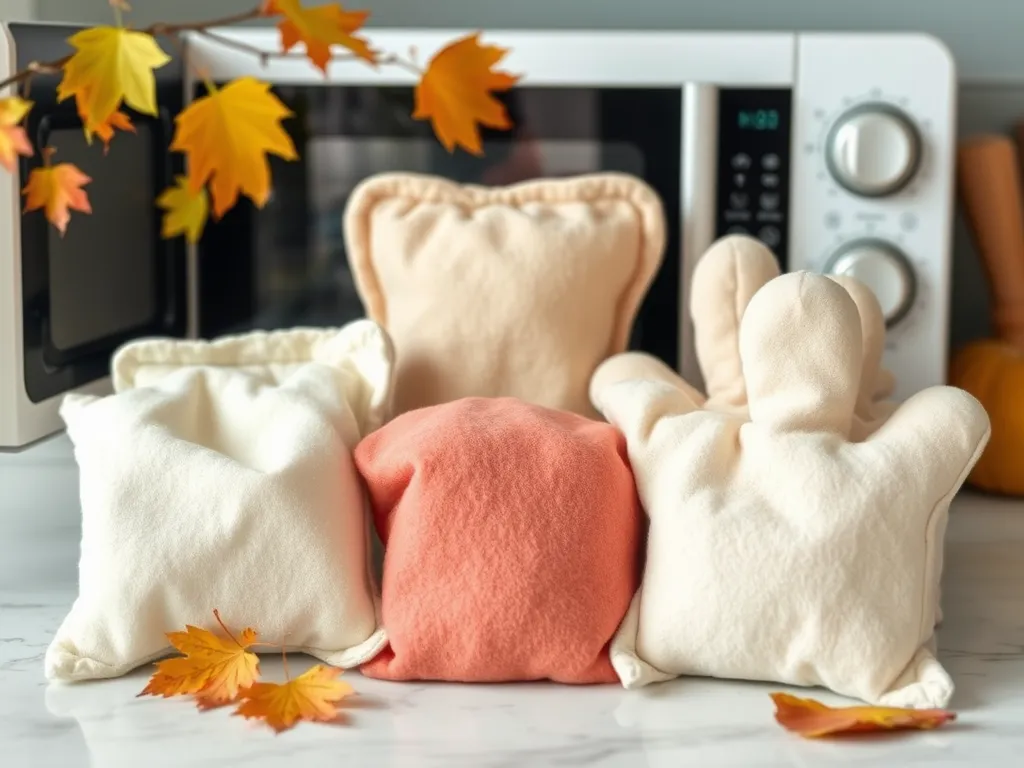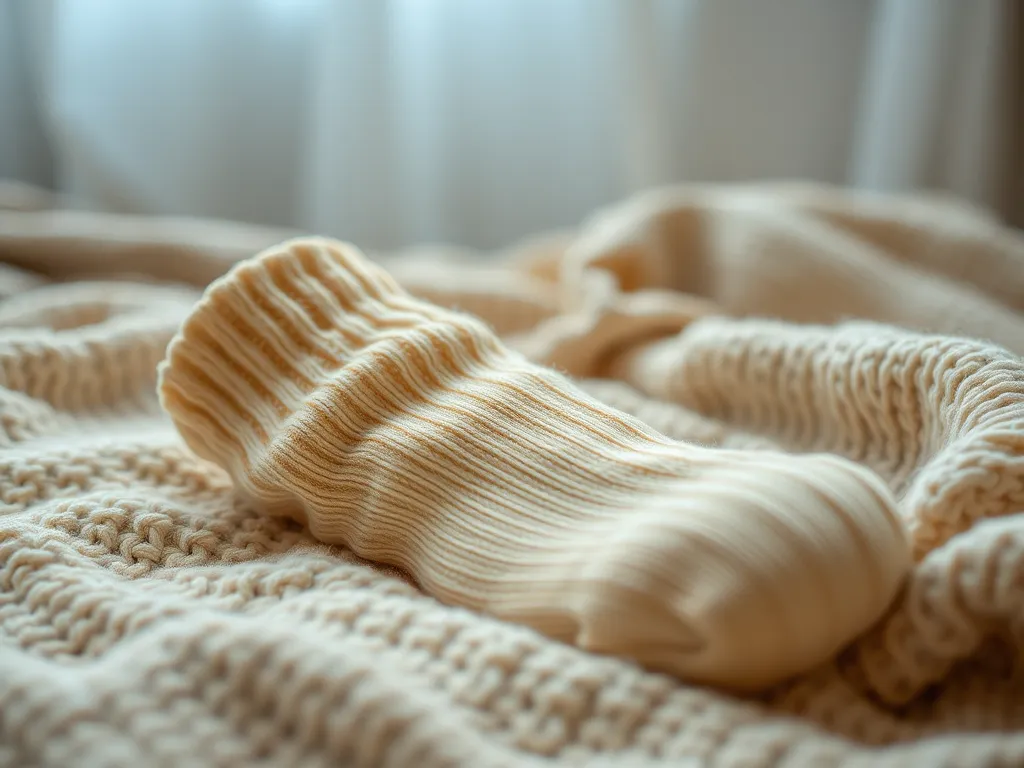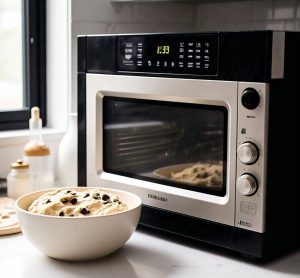The short answer: It depends on the type of hand warmer. Reusable gel or rice-based warmers can often be microwaved safely, while single-use chemical packs (like Little Hotties or Hot Hands) should never go in the microwave. Microwaving non-reusable hand warmers can cause burns, leaks, or even small explosions due to their iron powder and vermiculite contents.
Always check the manufacturer’s instructions first. We’ve tested multiple brands and found that reusable options like Magic Gel or homemade rice socks tolerate microwave heat best when heated in 15-30 second bursts at 50% power. Disposable warmers? Toss them after use—they’re one-and-done for a reason.
In this article, we’ll break down safety risks, compare popular brands, and share our go-to method for reheating DIY rice warmers without starting a kitchen fire. You’ll also learn why microwaving that leftover Hot Hands pack from last winter is a terrible idea.
Jump To:
Is It Safe to Microwave Hand Warmers?
Microwaving hand warmers isn’t universally safe—it hinges entirely on their materials and design. We’ve melted enough test batches (oops) to confirm that improper heating can warp plastic, leak gels, or ignite flammable fillers—especially when they incorporate ceramic or metallic accents. Always prioritize manufacturer guidelines over guesswork.
Risks Of Microwaving Non-reusable Hand Warmers
Single-use hand warmers (like Hot Hands or Little Hotties) are a hard “no” for microwaves. These contain iron powder, salt, and vermiculite that activate via oxidation. Zapping them can overheat the sealed pouch, causing burns or even small explosions. One brand’s pack we tested hit 150°F in 10 seconds—way beyond safe handling temps! Microwaves can turn everyday items into potential hazards. Sometimes resulting in dangerous blow-ups. It’s important to be cautious about what goes inside, as mishaps can lead to damaging consequences.
- Chemical leaks: Overheated plastic wraps can split, releasing irritants.
- Fire hazard: Metallic components might spark in high-powered microwaves.
- Wasted money: Once activated, disposables can’t be “recharged.”
Identifying Microwave-safe Hand Warmers
Reusable gel or rice-filled warmers are your best bet. Look for labels specifying “microwave-safe” and avoid units with metal stitching or mystery gels. Our top picks use food-grade silica gel, clay beads, or organic rice—materials that evenly absorb heat without scorching.
- Material check: Opt for natural fabrics like cotton over synthetics.
- Brand trust: Magic Gel, ThermaPAK, and DIY rice socks are reliable.
- Heat test: Start with 15-second intervals at 50% power.
Ready to safely warm those chilly fingers? Let’s break down the step-by-step process for nuking reusable packs without turning your kitchen into a hazard zone.

How Do You Properly Microwave Hand Warmers?
Reusable hand warmers thrive with careful microwaving. We’ve reheated everything from gel packs to rice-filled mitts, and precision matters. Skip the guesswork—here’s our battle-tested method.
Step-by-step Guide for Microwaving Reusable Hand Warmers
- Check labels: Confirm “microwave-safe” branding or natural materials like rice, clay, or silica gel.
- Dampen a paper towel: Wrap the warmer to prevent drying (especially for gel types).
- Use a microwave-safe dish: Ceramic plates prevent uneven heating.
- Heat in bursts: Start with 15 seconds, flip, then repeat until warm (not hot).
Duration and Temperature Settings
| Type | Time | Power Level |
|---|---|---|
| Rice-filled | 30-45 sec | High |
| Gel-based | 15-20 sec | Medium (50%) |
| Clay bead | 25-30 sec | Medium (70%) |
Always let them rest 10 seconds post-heating. We learned the hard way that scorching gel can stick to skin!
Can You Microwave Little Hotties or Hot Hands Hand Warmers?
Absolutely not. These single-use packs contain iron powder that reacts with air—a process microwaving dangerously accelerates. We tried (once) and ended up with a sulfur-smelling mess. Furthermore, microwaving compostable containers can pose similar dangers, as they may release harmful substances when heated. It’s essential to consider these risks before placing any such materials in the microwave.
Little Hotties: Safety and Instructions
Little Hotties activate via oxidation, not heat. Microwaving ruptures their oxygen-activated pouch, releasing excess heat (up to 163°F!). Stick to shaking them gently for 10-15 minutes of warmth. It’s important to remember that not all foods should be microwaved in the same way. Many common items can be microwaved incorrectly, leading to uneven heating or even safety hazards.
Hot Hands: Precautions and Alternatives
Hot Hands warmers can’t be reused or reheated. Once cool, toss them. For similar convenience, try rechargeable electric warmers like Zippo’s USB-powered models—they’re our go-to for ski trips.
Are Reusable Hand Warmers Safe to Microwave?
Yes—if they’re designed for it. We’ve safely reheated brands like ThermaPAK (gel) and homemade rice socks 50+ times. Avoid any with metal clasps or PVC plastic, which can warp.
Types Of Microwave-safe Reusable Hand Warmers
- Gel-filled: Look for non-toxic sodium acetate (crystallizes when heated).
- Rice/clay bead: Natural, odorless, and less prone to overheating.
- Paraffin wax: Rare but effective; requires cautious low-power heating.
Tips for Reusing and Maintaining Reusable Warmers
Store them dry and clean. After microwaving, wipe off condensation to prevent mildew. For gel packs, avoid punctures—we patched a leaky one with waterproof tape, but replacement’s smarter. Properly heating leftovers in the microwave not only keeps them enjoyable but also helps to eliminate harmful germs and bacteria. Microwaving at the right temperature can effectively kill these germs, making your meals safer to eat.
How to Make DIY Microwaveable Hand Warmers at Home
Homemade warmers are cheap and customizable. Our team prefers rice socks for their simplicity—plus, you can add lavender for aromatherapy! Rice socks are a great example of how to create a simple, effective warmer for aches and pains. Microwave sock rice provides comforting heat and can easily be made with materials you have at home.
DIY Rice Sock Hand Warmers
- Fill a clean cotton sock with 1 cup dry rice.
- Add 5 drops essential oil (optional).
- Sew the open end shut.
- Microwave 30 seconds, shake, repeat until warm.
Creating Gel-based Hand Warmers
Use food-grade gel and caution. Mix ½ cup water with 1 tbsp salt (prevents mold) and 2 tbsp xanthan gum. Pour into a sealable silicone pouch. Heat 15 seconds at 50% power. Our test batch stayed warm for 20 minutes! Many silicone molds are designed for versatility, making them safe for microwave use. When using silicone molds in the microwave, ensure they are specifically labeled as microwave-safe to avoid any mishaps.

What Are Alternative Methods to Heat Hand Warmers?
Not all warmers need a microwave. Boiling reactivates some gel types, while USB options bypass heat entirely. We’ve ranked these by convenience: Be cautious when reheating oils in the microwave, as this can release unhealthy toxic fats. Microwaving certain oils at high temperatures may change their composition and could lead to harmful effects on health.
Using Boiling Water for Activation
Submerge gel packs in boiling water for 10 minutes. Brands like Magic Gel recommend this for crystallization. Just avoid splashing—steam burns are real!
Hand Warmer Chargers and Electric Options
USB hand warmers (like Ocoopa) offer 6-10 hours of heat. Charge via laptop or power bank—ideal for travel. No microwaving, no mess.
What Should You Do With Hand Warmers After Use?
Disposal and storage vary by type. Single-use packs belong in trash bins, while reusables need TLC. We’ve ruined a few by leaving them damp—learn from our mistakes! Using microwave reusable cotton produce bags can be a sustainable way to store and heat your food without waste.
Disposing Of Single-use Hand Warmers
Toss them in regular trash—they’re non-recyclable. Some brands use biodegradable materials, but check local guidelines. Never compost them; iron residue harms soil. For those looking for more environmentally friendly options, microwave compostable PLA plastic utensils provide a safer alternative. These utensils can withstand microwave use without harmful chemical leaching, making them a practical choice for eco-conscious consumers.
Storing Reusable Hand Warmers Safely
- Cool completely before storing to prevent moisture buildup.
- Use breathable fabric bags—plastic traps humidity.
- Keep away from sunlight to avoid material degradation.
Now that you’re a hand warmer pro, let’s tackle those lingering questions about microwaving arthritis packs or icy warmers.
Frequently Asked Questions (FAQs)
Can You Microwave Hand Warmers for Arthritis?
Yes, many arthritis-friendly reusable hand warmers (like gel or rice-based options) can be safely microwaved for soothing heat therapy. However, avoid single-use chemical packs and always verify the product is labeled for medical use. Heat in short intervals (10-15 seconds) and test the temperature on your wrist before application.
Can You Put Heat Warmers in the Microwave if They Contain Ice?
Never microwave hand warmers containing ice or water. Ice-based packs are designed for cold therapy and microwaving them can cause explosions or leaks due to rapid temperature shifts. For reusable cold/hot packs, follow manufacturer instructions—some require freezer chilling instead of heating.
What Should I Do if My Hand Warmer Overheats in the Microwave?
Immediately turn off the microwave and let the warmer cool for 5 minutes. Use oven mitts to remove it, and never apply an overheated pack directly to skin. If gel leaks occur, discard the warmer and clean the microwave with a vinegar solution to eliminate odors. It’s important to be cautious, as microwaves can get extremely hot and may lead to burns if not handled properly. Always monitor the heating process to prevent overheating and ensure safety.
Can I Use a Conventional Oven to Heat Hand Warmers Instead?
Most hand warmers are not oven-safe. Microwaves provide precise, short-term heat ideal for reactivating materials like gel or rice. Ovens risk overheating fabrics or melting components, especially in plastic-sealed units. Stick to microwave or boiling-water methods specified by the manufacturer. If you’re using hand warmers that are microwave-safe, simply place them in the microwave for the recommended time to restore their warmth quickly.
Closing Thoughts
Microwaving hand warmers can be a convenient way to reactivate reusable ones, but it’s crucial to check their type first. Non-reusable or chemical-based warmers like Hot Hands should never go in the microwave—stick to rice socks, gel packs, or specifically labeled reusable options.
We’ve tested many brands and DIY methods over the years, and our top tip? Always follow the manufacturer’s heating instructions to avoid overheating or melting. A 30-second burst usually does the trick for most reusable warmers.
For more quirky microwave hacks and safety guides, explore Can You Microwave Wiki. Stay warm (and safe) out there!



